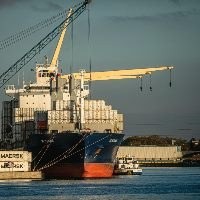(BRUSSELS) – The EU Commission tabled a 35-point action plan Thursday to shift more cargo over to Europe’s rivers and canals, and boost the role of inland waterway transport in Europe’s mobility and logistics systems.
Transporting more cargo over rivers and canals is also important for the key objective of facilitating the transition to zero-emission barges by 2050.
This, says the Commission, is in line with the EU’s ‘Green Deal’ and ‘Sustainable and Smart Mobility Strategy’, which set the goal of increasing transport by inland waterways and short sea shipping by 25% by 2030, and by 50% by 2050.
“As one of the most CO2-efficient transport modes available, inland waterways have the potential to play a central role in decarbonising our transport systems,” said Transport Commissioner Adina Valean: “Yet today, our canals and rivers carry just 6% of EU freight. With an inland waterway network of 41,000km spanning 25 Member States, there is scope to do a lot more; both along our TEN-T corridors and in inner cities, where inland waterways can help to green the last mile of city logistics.”
Inland waterways transport around 150 billion tkm of cargo every year, in particular in densely populated and congested areas. Approximately 44,000 people work on inland vessels, of which 60% in goods transport and 40% in passenger transport.
The new ‘NAIADES III’ action plan will put in place the conditions for the inland waterway transport sector to better seize the opportunities linked to the shift towards a zero-emission and digital economy.
Among the actions proposed is the revision of the Combined Transport Directive, which, along with support for investments towards transshipment capacity and inland multimodal terminals, will enable the greater integration of inland waterways into a modern, trans-European intermodal transport system.
The action plan also includes measures to accelerate and stimulate investments towards the development and deployment of innovative, zero-emission and zero-waste technologies for vessels and inland ports, and helping the sector keep up with digital developments.
This will be key to ensuring its long-term sustainability and competitiveness, while opening up attractive new job opportunities for a skilled workforce.
NAIADES III: Boosting future-proof European inland waterway transport


